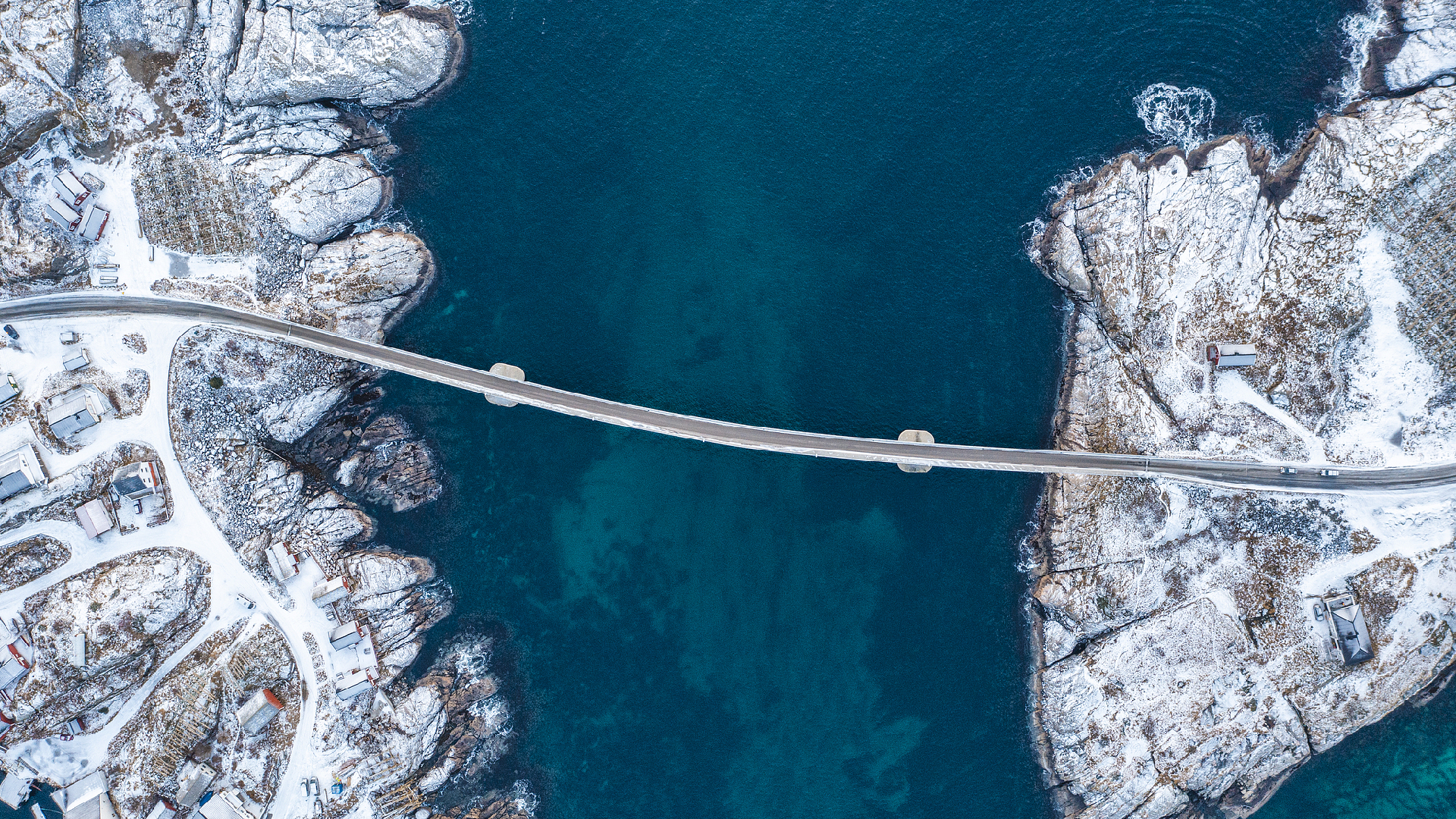Norway Set to Launch World's First CO2 Storage Service
Norway has officially opened the entrance to a large undersea vault designed for carbon dioxide on Thursday, marking an important milestone ahead of launching what the operator describes as the first commercial service for CO2 transport and storage.

The Northern Lights initiative intends to capture CO2 emissions from factory smokestacks across Europe and store them in geological reservoirs located beneath the seabed. This effort aims to prevent CO2 from being released into the atmosphere, thereby contributing to the fight against climate change.
A terminal inaugurated on Thursday on Oygarden Island features 12 gleaming storage tanks set against the backdrop of the North Sea. A series of pipes meander around the tanks, including one that extends into the sea, where the liquefied CO2 will be transported by boat. From these tanks, the CO2 will journey through a 110-kilometer pipeline to be injected into the seabed at a depth of approximately 2.6 kilometers for permanent storage.
The facility, a collaboration among oil giants Equinor of Norway, Anglo-Dutch Shell, and TotalEnergies of France, is projected to commence its first CO2 burials in 2025. Initially, it will have a capacity to store 1.5 million tonnes of CO2 annually, with potential expansion to five million tonnes in a second phase, contingent on demand.
Managing director Tim Heijn stated, "Northern Lights is really a demonstration project that carbon capture and storage is a technically feasible solution," further elaborating that it represents one of the tools available to combat climate change.
However, the technology is intricate and expensive, a fact highlighted by advocates from the UN's Intergovernmental Panel on Climate Change and the International Energy Agency, particularly for sectors like cement and steel, which are difficult to decarbonize.
The current global capacity for CO2 capture stands at just 50.5 million tonnes, a mere 0.1 percent of total annual emissions. To limit global warming to 1.5 degrees Celsius compared to pre-industrial levels, the IEA asserts that CCS must prevent at least one billion tonnes of CO2 emissions annually by 2030.
Development of this technology has been sluggish due to high costs relative to fees for CO2 emissions credits, making it heavily reliant on subsidies. Daniela Peta, public affairs director at the Global CCS Institute, remarked, "Public support was and will be crucial to help such innovative projects to advance, especially as CCS costs are still higher than the costs of CO2 emissions in Europe."
The Norwegian government has financed 80 percent of Northern Lights’ total costs, although the exact figure remains confidential. This effort is part of a broader 30-billion-kroner initiative named "Longship," with 20 billion kroner provided by the state.
The North Sea, characterized by its depleted oil and gas fields and extensive pipeline network, serves as an ideal location for burying unwanted greenhouse gases. Other undersea storage projects are also in progress across Europe, such as the Greensand initiative, which British chemicals group Ineos and 23 partners plan to launch off Denmark's coast by late 2025 or early 2026.
While Longship originally included two CO2 capture sites in Norway, the cement factory Heidelberg Materials in Brevik is expected to start shipping its captured emissions to the site next year. However, rising costs have led the waste-to-energy plant Hafslund Celsio in Oslo to reevaluate its plans.
Northern Lights has secured its initial commercial cross-border contracts, partnering with Norwegian fertilizer maker Yara and energy group Orsted to dispose of CO2 from an ammonia plant in the Netherlands, along with two biomass power facilities in Denmark. Yet, securing agreements remains challenging, especially as the EU's emissions trading system remains an economical option. "That means that you can emit and pay the ETS instead of trying to find a solution," lamented Heijn. He added, "The next real game changer will be if we can implement this at scale. And to ... we need to have sufficient emitters deciding with us that this is the way to go."
Some environmental advocates, however, have expressed skepticism regarding the technology, voicing concerns about potential leaks. Frode Pleym, head of Greenpeace Norway, characterized Northern Lights as "greenwashing," pointing out that the project is managed by oil companies whose intentions include the continued extraction of oil and gas. "Their goal is to be able to continue pumping oil and gas. CCS, the electrification of platforms and all of these kinds of measures are used by the oil industry in a cynical way to avoid doing anything about their enormous emissions," he commented.
In response to these criticisms, Norway's Energy Minister Terje Aasland defended the initiative, stating, "The alternative is to fail to meet the climate challenges, or that industries will have to shut down. This alternative is not at all desirable."
Ian Smith for TROIB News
Discover more Science and Technology news updates in TROIB Sci-Tech












